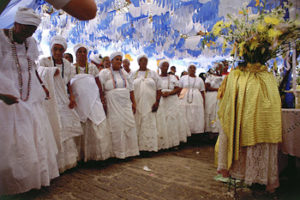
*Candomblé is celebrated on this date in 1800. This African diasporic religion developed in Brazil during the 19th century.
It arose through syncretism between the traditional religions of West Africa and the Roman Catholic form of Christianity. There is no central authority overseeing Candomblé, which is organized into autonomous groups. Candomblé developed among Afro-Brazilian communities amid the Atlantic slave trade of the 16th to 19th centuries. It arose through the blending of the traditional religions brought to Brazil by enslaved West and Central Africans, the majority of whom were Yoruba, Fon, and Bantu, and the Roman Catholic teachings of the Portuguese colonialists who then controlled the area.
It primarily coalesced in the Bahia region during the 19th century. Following Brazil's independence from Portugal, the constitution of 1891 enshrined freedom of religion in the country, although Candomblé remained marginalized by the Roman Catholic establishment, which typically associated it with criminality. In the 20th century, growing emigration led to the spread of Candomblé throughout Brazil and abroad. The late 20th century saw an increase in connections between Candomblé and related traditions in West Africa and the Americas, including Cuban Santería and Haitian Vodou. Since the late 20th century, some practitioners have emphasized a re-Africanization process to remove Roman Catholic influences and create forms of Candomblé that are closer to traditional West African religions.